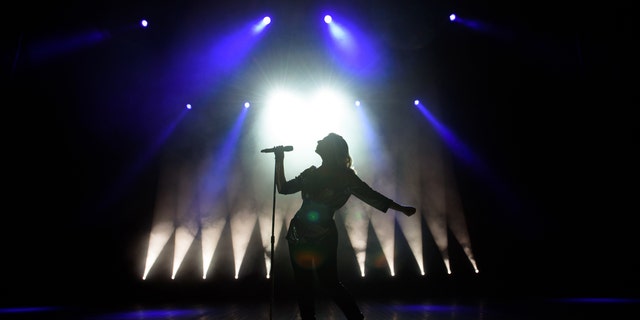
Fox News Flash top headlines for August 21
The coronavirus pandemic has largely put a pause on live performances, but new research suggests there may be a way for singers to safely showcase their talents: Keep the volume down.
Preliminary data from a new study suggests that when singing and speaking at the quietest volume (approximately 50-60 decibels), neither activity is significantly different to breathing in regards to expelling airborne particles called aerosols, according to the report. The levels, however, did differ at higher volumes, according to the study.
“The study has shown the transmission of viruses in small aerosol particles generated when someone sings or speaks are equally possible with both activities generating similar numbers of particles.” Jonathan Reid, Director of ESPRC Centre for Doctoral Training in Aerosol Science and a corresponding author on the paper, said in a release by the University of Bristol.
HOMEMADE CORONAVIRUS FACE MASKS SHOULD BE TWO OR THREE LAYERS TO STOP SPREAD OF VIRUS, STUDY FINDS
The study, PERFORM, was published on the pre-print server ChemRxiv, and looked at the number of aerosols and droplets (up to 20 micrometers in diameter) expelled by a group of 25 professional performers who performed singing, speaking, coughing and breathing exercises. The study evaluated the participants as they sang and spoke "Happy Birthday" within the 50–60, 70-80 and 90-100 decibel (dB) ranges, the news release stated.

Study shows transmission of viruses in aerosol particles generated when someone sings or speaks are equally possible with both activities generating similar numbers of particles, acording to researchers<br><br>
Courtesy:iStock
The investigators observed a spike in aerosol mass with increased volume while speaking and singing, rising by a factor as much as 20-30 times. However, singing did not produce considerably more aerosols than speaking at a similar quiet volume, the report said.
When the participants recited "Happy Birthday" at different volume levels, the researchers found during the loudest singing and speaking volume level, 90-100dB, singing produced about 36 times more aerosol mass than breathing, and speaking generated 24 times more, according to one report.
“The volume of the activity, whether it is speaking or singing softly or speaking or singing loudly, that is really the main factor in governing the aerosol mass that is generated,” Reid told one news outlet.
PRELIMINARY STUDY INVESTIGATES HOW CORONAVIRUS PARTICLES MAY TRAVEL IN CLASSROOMS, INDOOR AREAS
The team of researchers from the University of Bristol and Imperial College London wanted to accurately quantify the aerosols that were expelled from the performers. While measuring the aerosols produced by the vocalizations, the researchers avoided false readings caused by particles found in the environment by using an orthopaedic operating theatre, which they stated has an environment of “zero aerosol background,” the news release said.
The study authors concluded that performing arts organizations could potentially treat singing the same as speaking, instead focusing on the volume and duration of vocalizations during performances, the number of performers and audience members, as well as the efficiency of the venue’s ventilation system.
“This research will give useful information to performers, venues and arts organizations about how they can reintroduce singing performances," said corresponding study author Declan Costello, an ear, nose and throat surgeon with a specialty in voice disorders at Wexham Park Hospital, in the release.
“Our research has provided a rigorous scientific basis for COVID-19 recommendations for arts venues to operate safely for both the performers and audience by ensuring that spaces are appropriately ventilated to reduce the risk of airborne transmission,” Reid, also a professor at school of chemistry at the University of Bristol, stated.
The authors cautioned that the data is preliminary, but hope it will add to future research that moves toward allowing live performances and safe distancing of audience and performers during the coronavirus pandemic. The study is not yet peer-reviewed and was supported by Public Health England and the Department for Digital, Culture, Media and Sport (DCMS), according to the news release.
Source: Read Full Article